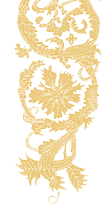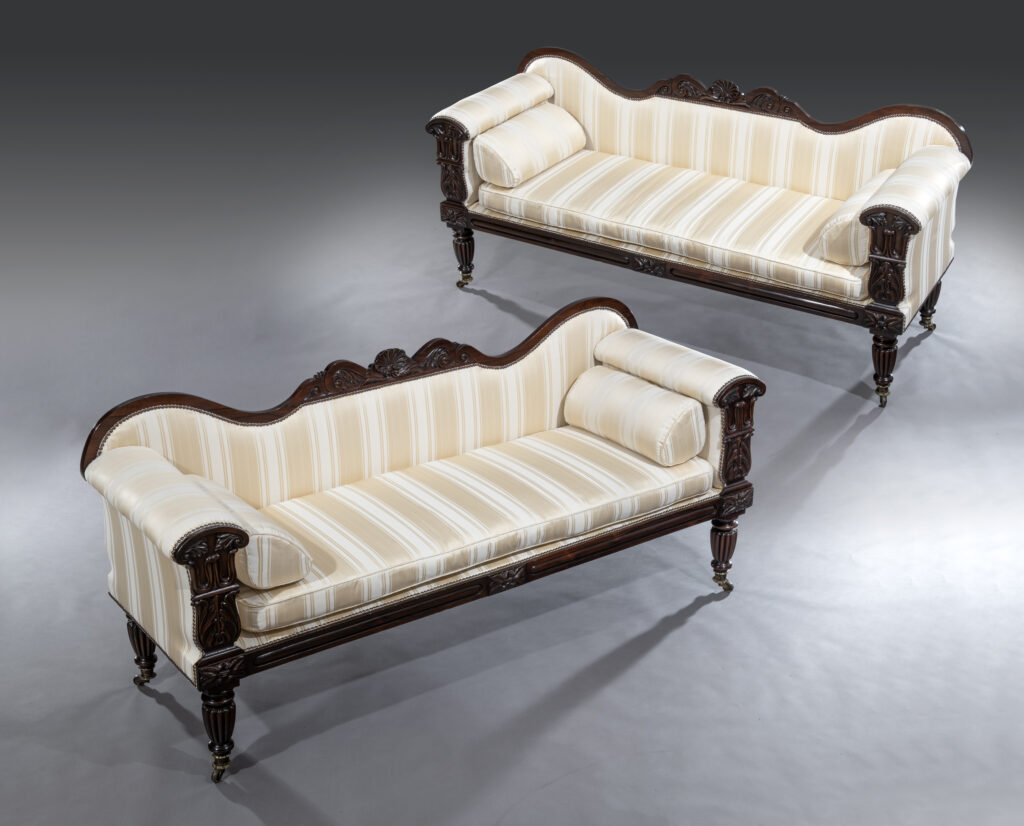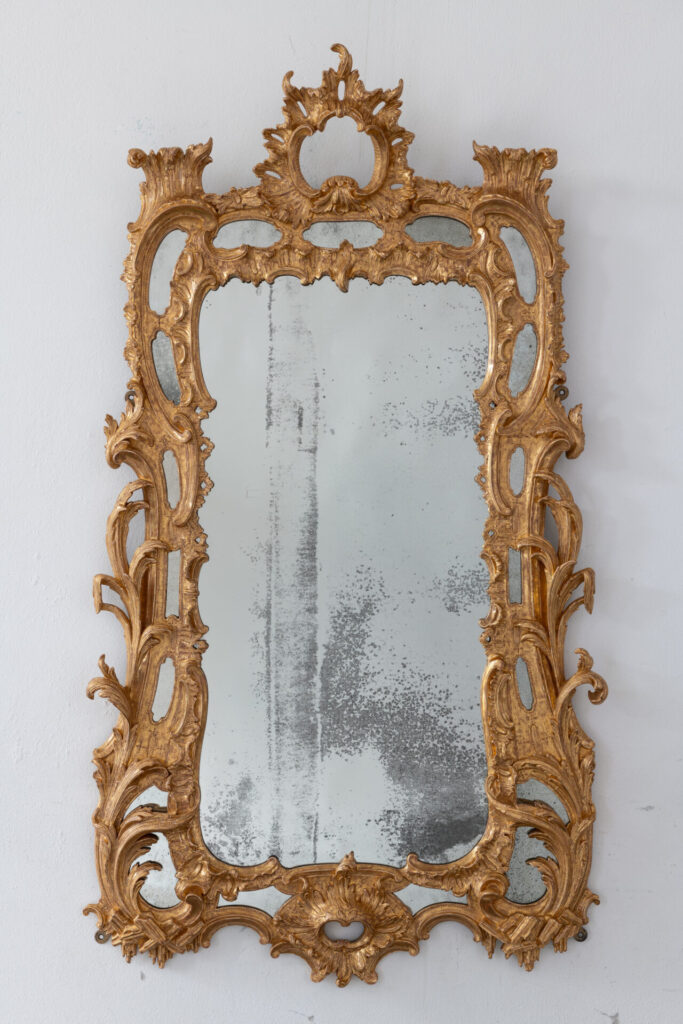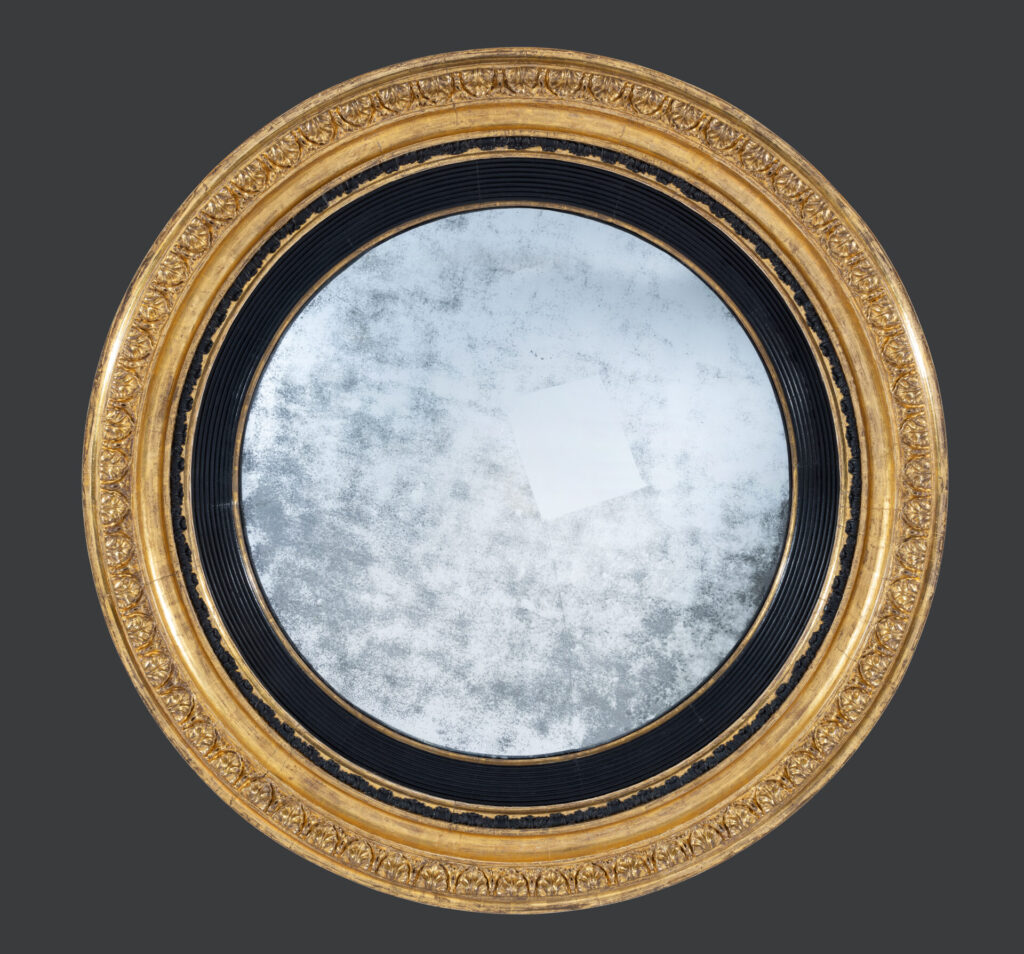George III 18th Century Period Secretaire Cabinet
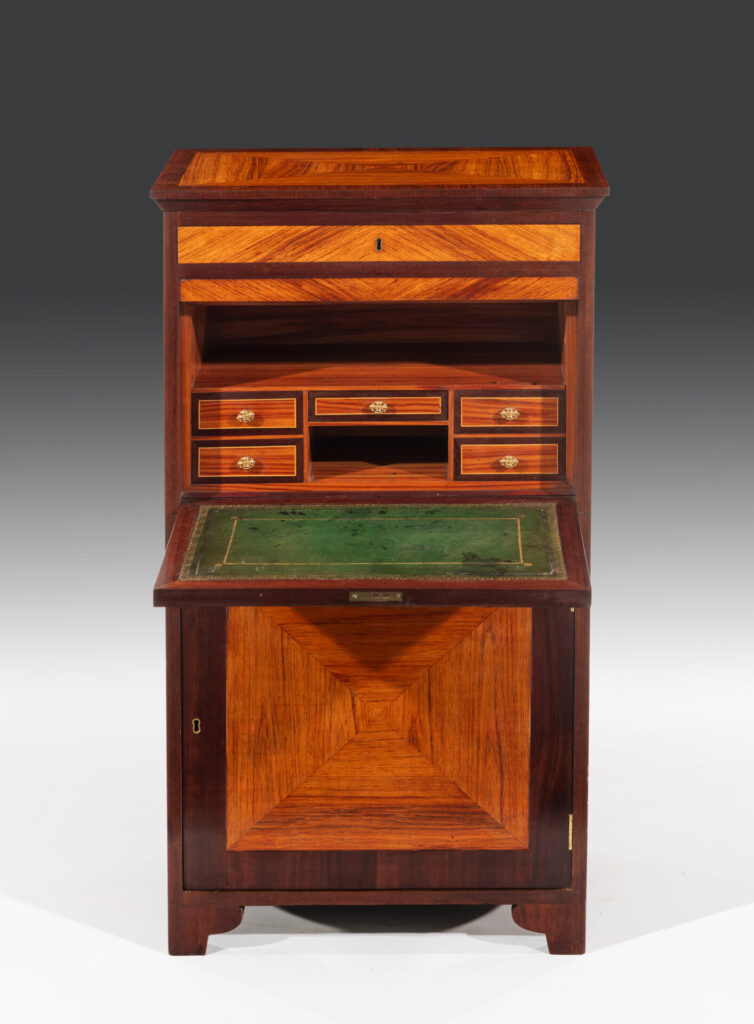
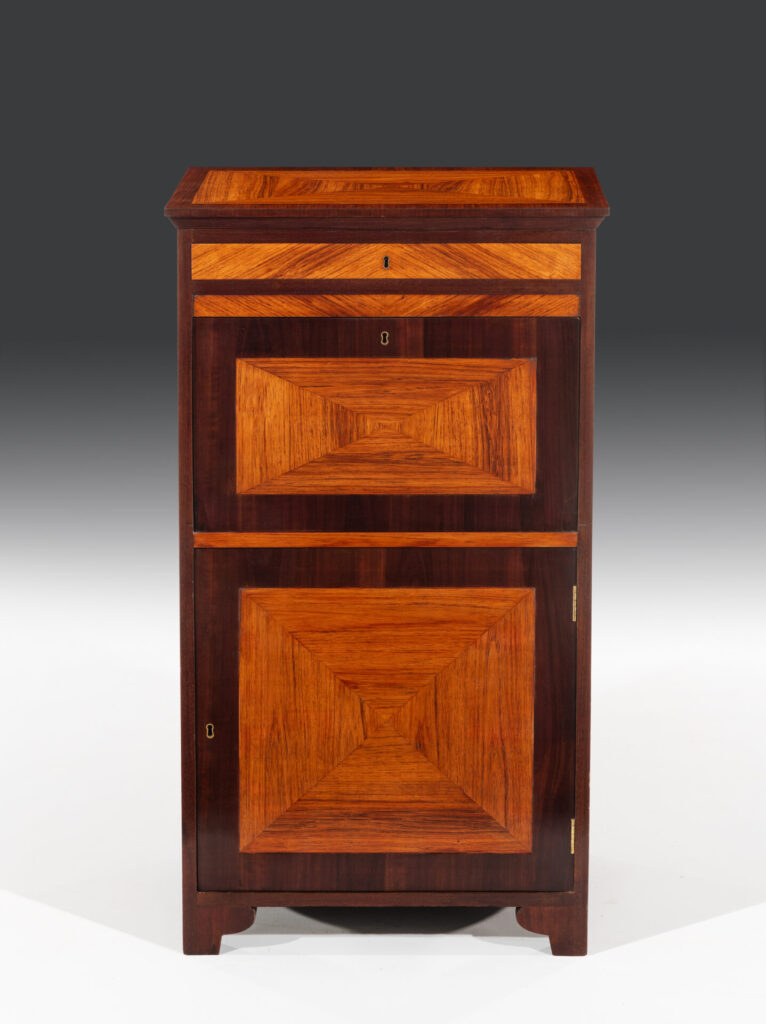
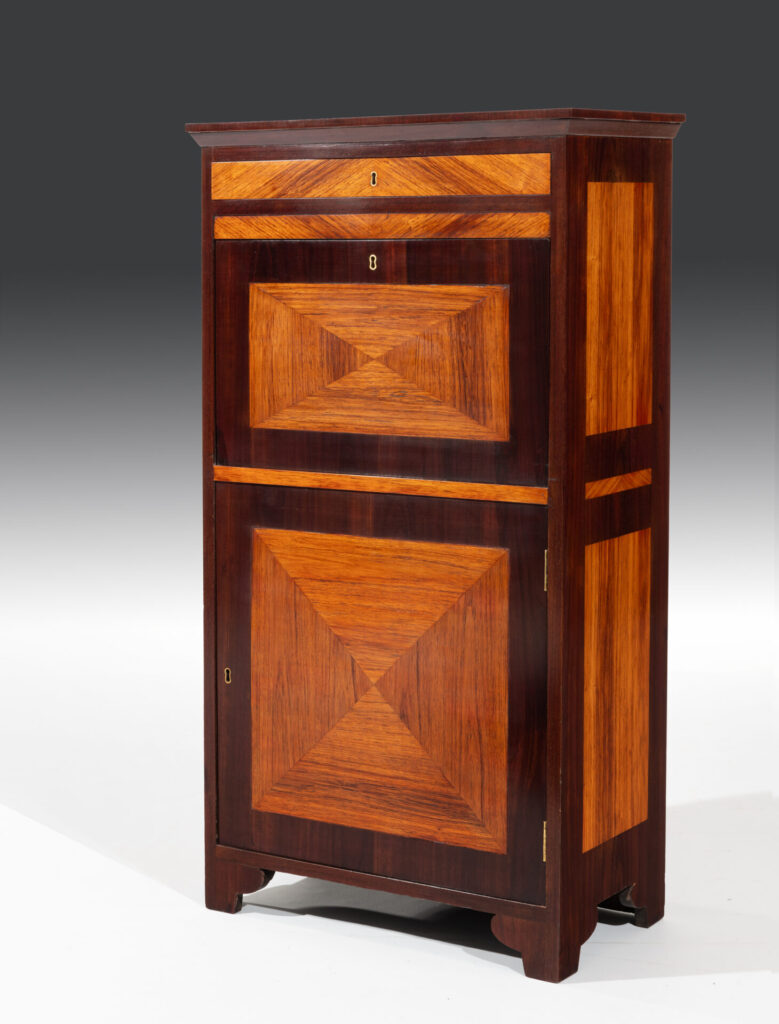
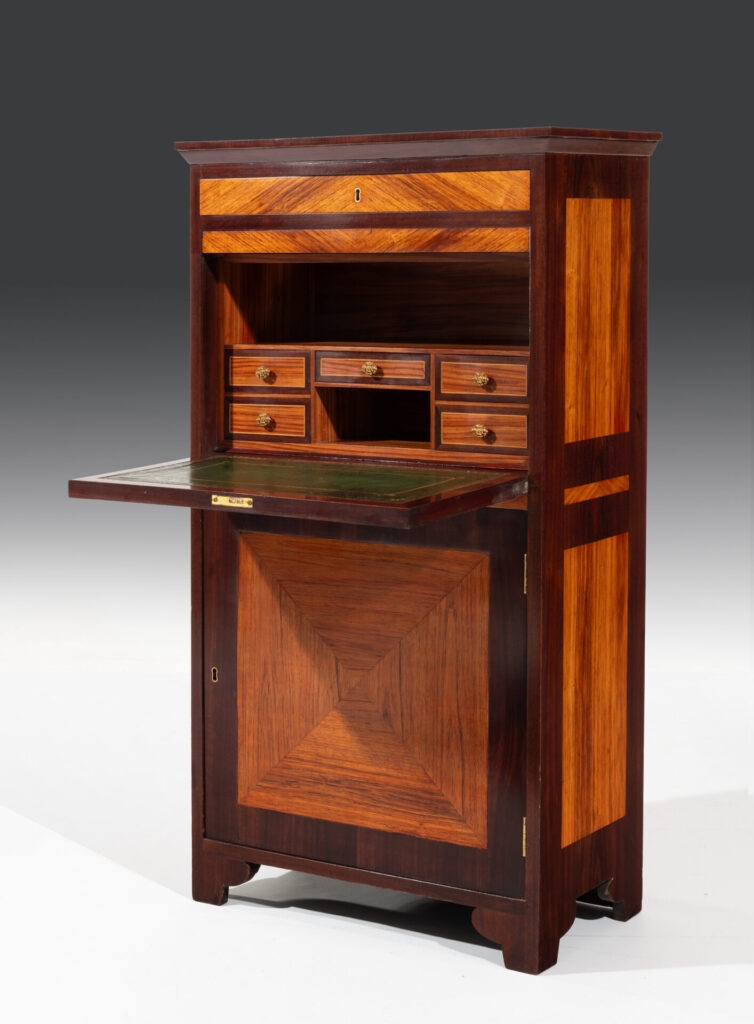
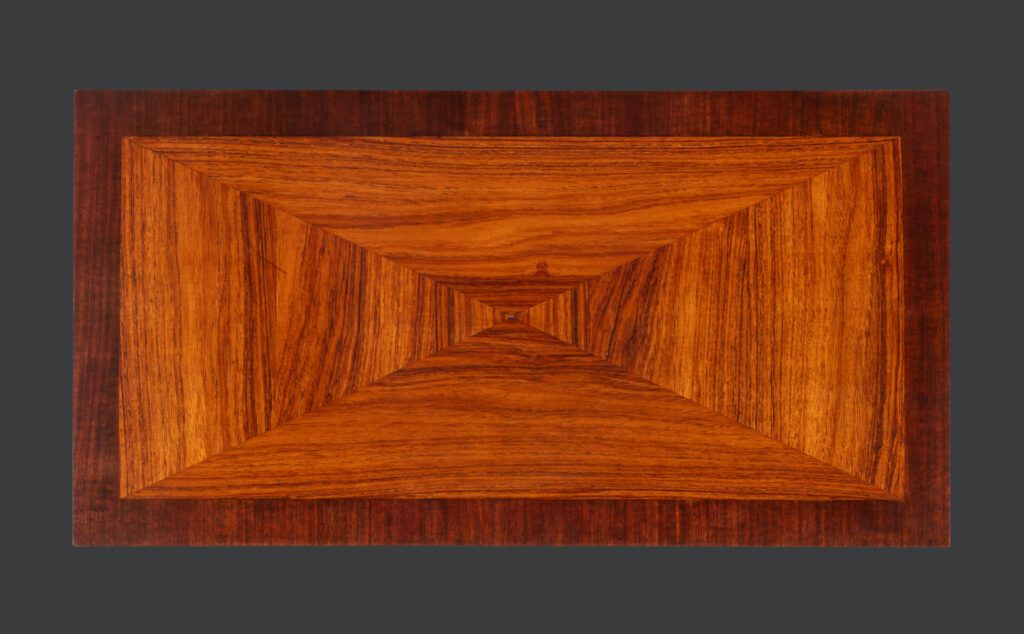
George III 18th Century Period Secretaire Cabinet
English
circa 1785 - 1795
Late George III 18th century period tulipwood and purpleheart 'secrétaire à abattant' of small proportions.
A fine and rare Sheraton period secretaire desk. The purpleheart crossbanding is followed throughout with large tulipwood parquetry panels to complement the overall style.
The drawer to the top frieze is above a fall front desk which is fitted with banks of drawers. The secretaire drawers retain the original colours of the base woods as well as the original gilt brass handles.
The leather lined surface could be from the time of manufacture and sits above a cupboard door that opens to reveal a single shelf.
The Sheraton abattant stands on bracket feet with quarter inlays to the sides and top.
The fall-front secretaire, or desk, has as many names as it does forms. Often called a ‘secretaire’, or ‘secretary’ in America, it can also simply be a ‘writing cabinet’, and the French term ‘secrétaire à abattant’, which translates as a ‘drop-leaf desk’, is regularly used by antiques dealers and auction rooms. All describe an upright cabinet with drawers or doors in the base, below a flap-down writing platform disguising pigeonholes and small drawers for hiding treasures.
The fall-front secretaire has its origins in the desk, or bureau, and is derived from the Renaissance writing cabinet. The fall-front style was originally realised as a cabinet placed on an open stand or table. Those which incorporated a chest of drawers to the base became fashionable during the 18th century, being in production from around 1675 in England.
Secretaires in the Louis XV style were shapely cabinets, often topped by marble, incorporating fashionable woods, such as amaranth and kingwood, and sometimes with painted japanned panels. Dutch secretaires tended to employ ornate floral marquetry or oval inlaid reserves, while French Empire or Directoire examples favoured more masculine shapes, plain mahogany veneers and simple gilt bronze mounts. In Britain, 18th-century secretaires, or escritoires, followed the trends of these given periods too, with delicate inlaid borders or moulded detail being favoured over lavish decoration.
During the 19th century, the secretaire came to the forefront of middle-class interiors, especially within European countries where the ‘Biedermeier style’ developed. While Empire style was formal, impressive, gold accented and highly ornamented, Biedermeier designers embraced a more natural, relaxed look. Common features of the style are curves, playful geometric shapes and an emphasis on the grain of the wood, as opposed to any kind of applied ornamentation. The secretaire epitomised the period, being economical in space, perfectly suited to intellectual activities and with numerous drawers for collectors’ items, documents or diaries. The decoration was pared back, to focus on the natural beauty of the wood grain.
Variations on the style were also adopted by 20th-century designers, and examples span the turn of the century to the 1960s and 70s. Charles Rennie Mackintosh designed a pale-painted fall-front desk on a blocked stand, with pigeonholes to the interior, for The Hill House in Helensburgh just outside Glasgow.
The continued popularity of the fall-front desk is due in part to its clever use of space and its versatility. Although letter writing is no longer fashionable, contemporary examples prove the secretaire still has a place in current design and, with good storage in the base, a fold-away surface that is perfect for a laptop, and miniature drawers in which to house any number of items, the secretaire still lends itself to 21st-century living.
Condition
Original handles and leather lining
Dimensions
Height 108.00cm (42.52 inches)
Width 59.00cm (23.23 inches)
Depth 31.00cm (12.2 inches)
Stock No: 11470
£8,750.00
In-stock